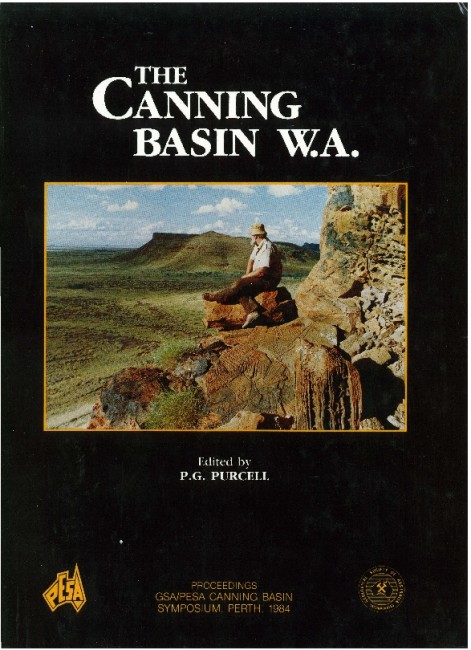Publication Name: The Canning Basin, W.A.
Authors: E.J. (Ted) Ellyard
Date Published: December 1984
Number of Pages: 28
Reference Type: Book Section
Abstract:
Oil generation and migration in the Fitzroy Trough and adjacent shelf regions of the northern Canning Basin has been reviewed. Optical maturity indicators were used to define the maturity versus depth relationship at well locations between Lake Betty No. 1 in the southeast and Meda No. 1 in the northwest. Palaeoburial reconstructions using the Lopatin method established a burial and maturation history from which a palaeotemperature model was developed by comparison to measured maturity levels in the wells (Ro%,TAl). This model assumes that the geothermal gradients were significantly lower during the Palaeozoic but have
increased since the Triassic. The increase in geothermal gradients is attributed to a regional heating event of
Miocene age but may also be linked to vulcanism in Permian to Triassic times.
The maturation histories were integrated with regional depth and isopach maps for two of the basins several
potential source units, the Frasnian Pillara Formation and the Lower Carboniferous Laurel Formation. This established regional trends of present day maturity and the timing of peak oil generation for each source interval.
Generation and migration of oil from Pillara Formation sediments in most areas at the Fitzroy Trough occurred
in the Palaeozoic. The formation is presently within peak oil generation phase over most of the shelf areas and could source Mesozoic and younger structures as well as older reservoirs. Migration of oil from Laurel Formation shales in the Fitzroy Trough probably occurred from Mesozoic to present times except in deeply buried areas along the southern margin. The Laurel Formation is a potential source of oil for Mesozoic and younger structures in the Fitzroy Trough.


